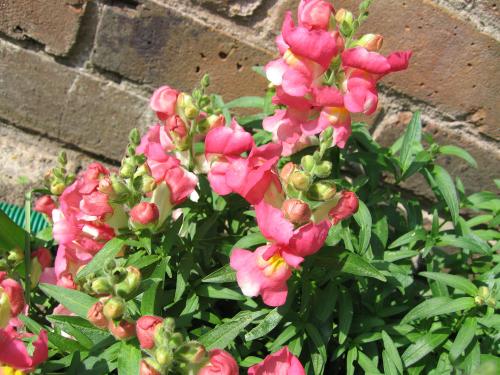As children we learnt to recognize the tall spike of the simple Snapdragon with its lipped tubular flowers, but these days there is a wide variety of flower shapes, colours and plant heights. This garden favourite is really a perennial which will withstand short periods of frost, but it is usually grown as a half hardy annual. When the plants are about 3 in. high, pinch out the growing points to encourage bushiness. Stake tall varieties if the site is exposed and remove faded spikes to prolong the flowering season.
VARIETIES: Our garden Snapdragons are varieties of A. majus. There is the Tell group which provides flowers for bold bedding schemes and cutting – in the catalogues you will find ‘Apple Blossom’ (pink), the vigorous Rocket hybrids and the Azalea-flowered types such as ‘Madame Butterfly’ with trumpet-like blooms. The Intermediate group is the most popular – ‘Coronette Mixed’ is generally considered to be the finest of all but you can choose ‘Rembrandt’ (scarlet and gold), ‘Black Prince’ (deep crimson) or one of the Hyacinth-flowered varieties. The Dwarf group is used for edging or carpeting – pick ‘Magic Carpet’, ‘Floral Carpet’ or ‘Tom Thumb Mixed’. Choose a rust-resistant variety if this disease is a problem in your area.
SITE & SOIL: Any well-drained soil, but light or medium land is preferred. Choose a sunny spot.
PLANT DETAILS: Height 3 – 4 ft (Tall Group), 1 ½ ft (Intermediate Group) or 6 – 9 in. (Dwarf Group). Spacing 1 ½ ft (Tall Group), 1 ft (Intermediate Group) or 9 in. (Dwarf Group). Flowering period July – October.
PROPAGATION: Follow the Half Hardy Annual technique (page 82). Alternatively sow seeds outdoors in July and plant the seedlings in September where they are to flower. This Biennial technique gives earlier flowers, but it is not suitable for cold and exposed sites.

